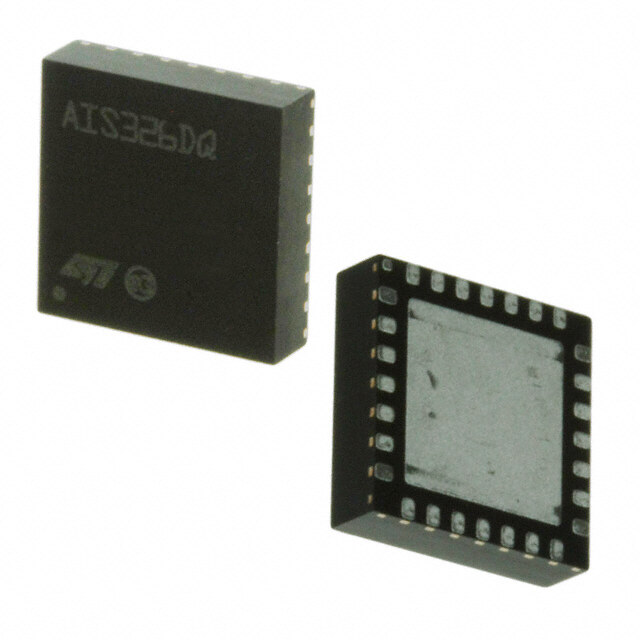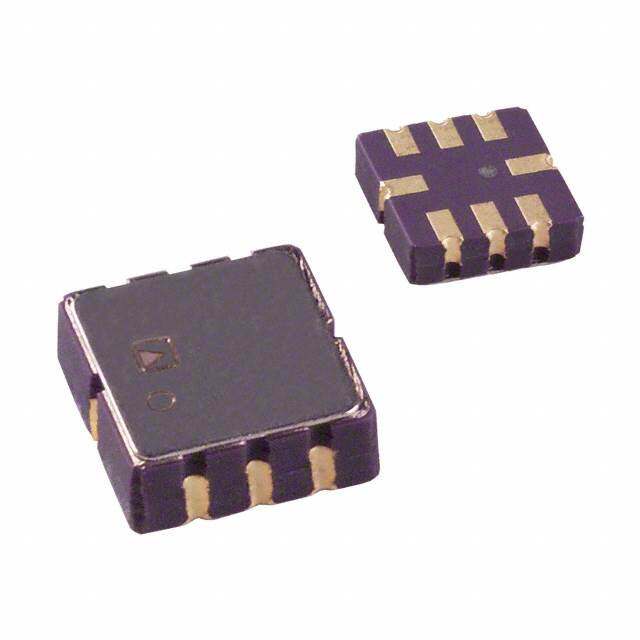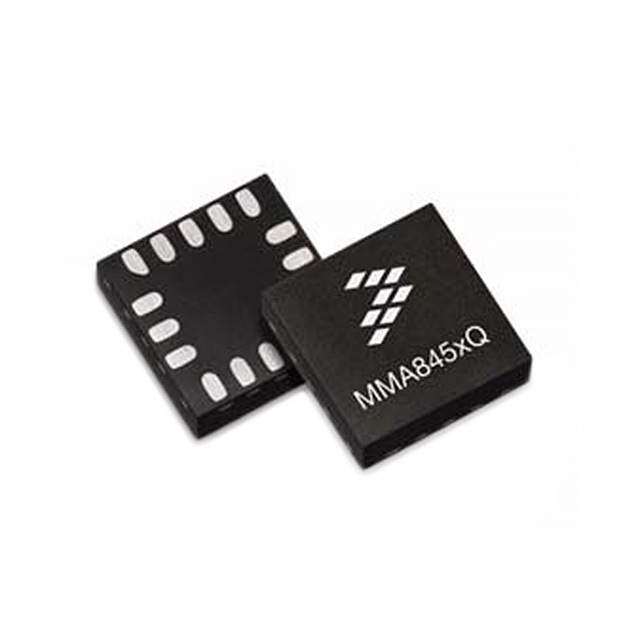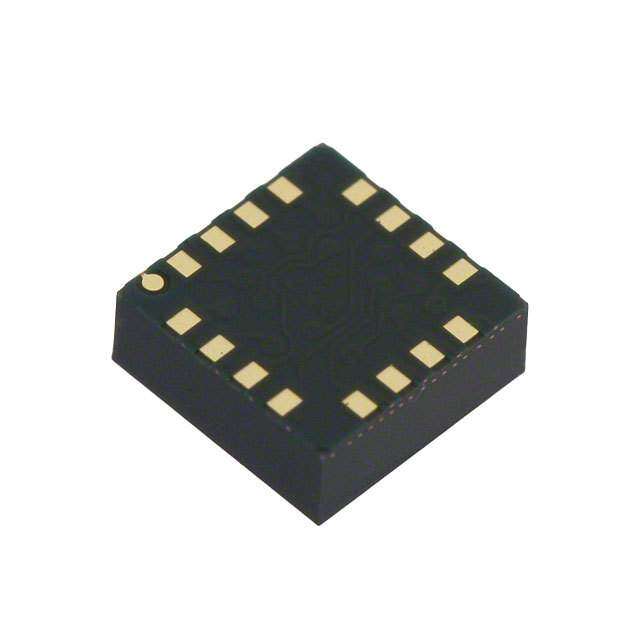ICGOO在线商城 > 传感器,变送器 > 运动传感器 - 加速计 > ADXL323KCPZ
- 型号: ADXL323KCPZ
- 制造商: Analog
- 库位|库存: xxxx|xxxx
- 要求:
| 数量阶梯 | 香港交货 | 国内含税 |
| +xxxx | $xxxx | ¥xxxx |
查看当月历史价格
查看今年历史价格
ADXL323KCPZ产品简介:
ICGOO电子元器件商城为您提供ADXL323KCPZ由Analog设计生产,在icgoo商城现货销售,并且可以通过原厂、代理商等渠道进行代购。 ADXL323KCPZ价格参考¥70.75-¥75.34。AnalogADXL323KCPZ封装/规格:运动传感器 - 加速计, Accelerometer X, Y Axis ±3.6g 1.6kHz 16-LFCSP-LQ (4x4)。您可以下载ADXL323KCPZ参考资料、Datasheet数据手册功能说明书,资料中有ADXL323KCPZ 详细功能的应用电路图电压和使用方法及教程。
ADXL323KCPZ 是由 Analog Devices Inc.(ADI)公司生产的一款低功耗、三轴加速度传感器,属于运动传感器中的加速计类别。该传感器广泛应用于需要测量加速度、振动、倾斜或冲击的场合,具有高精度和良好的温度稳定性。 主要应用场景包括: 1. 工业监测系统:用于监测设备振动状态,如电机、泵、风机等,实现预测性维护,防止设备故障。 2. 消费类电子产品:如智能手环、计步器、游戏控制器等,用于检测用户的动作和姿态变化。 3. 汽车电子:用于车辆安全系统,如电子稳定控制系统(ESC)、防盗系统或车载诊断系统中,监测车辆运动状态。 4. 医疗设备:如便携式健康监测设备、康复设备等,用于监测患者的活动状态或生理运动。 5. 楼宇自动化:用于智能照明、安防系统中,通过检测人员移动或设备振动来控制设备启停。 6. 无人机与机器人:用于姿态控制和运动检测,辅助实现稳定飞行或精准移动。 该传感器采用小型封装,易于集成,适合空间受限的应用场景,同时具备良好的抗冲击能力,适用于复杂工作环境。
| 参数 | 数值 |
| 产品目录 | |
| 描述 | IC ACCELEROMETER LP 16LFCSP |
| 产品分类 | 加速计 |
| 品牌 | Analog Devices Inc |
| 数据手册 | |
| 产品图片 |
|
| 产品型号 | ADXL323KCPZ |
| PCN组件/产地 | |
| rohs | 无铅 / 符合限制有害物质指令(RoHS)规范要求 |
| 产品系列 | iMEMS® |
| 产品目录页面 | |
| 供应商器件封装 | 16-LFCSP-LQ(4x4) |
| 加速度范围 | ±3.6g |
| 安装类型 | 表面贴装 |
| 封装/外壳 | 16-LQFN 裸露焊盘,CSP |
| 带宽 | 1600Hz |
| 接口 | - |
| 标准包装 | 1 |
| 灵敏度 | 300mV/g |
| 电压-电源 | 1.8 V ~ 5.25 V |
| 视频文件 | http://www.digikey.cn/classic/video.aspx?PlayerID=1364138032001&width=640&height=505&videoID=2245193160001http://www.digikey.cn/classic/video.aspx?PlayerID=1364138032001&width=640&height=505&videoID=2245193171001http://www.digikey.cn/classic/video.aspx?PlayerID=1364138032001&width=640&height=505&videoID=2245193161001http://www.digikey.cn/classic/video.aspx?PlayerID=1364138032001&width=640&height=505&videoID=2245193172001 |
| 轴 | X,Y |
| 输出类型 | 模拟 |

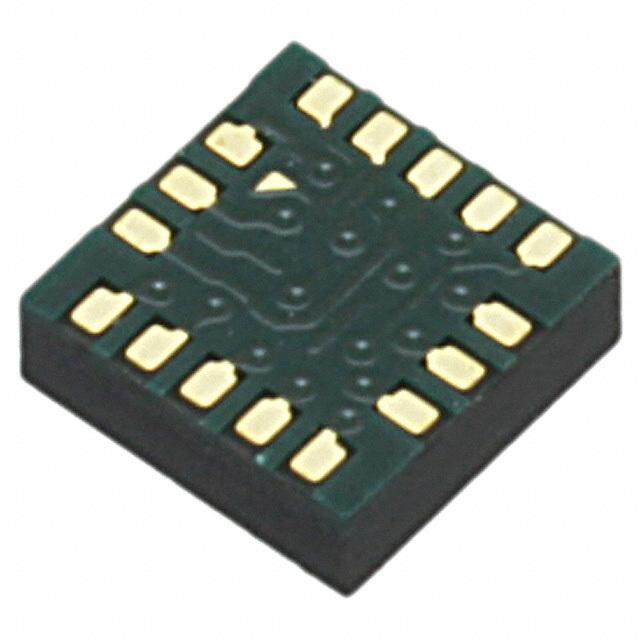
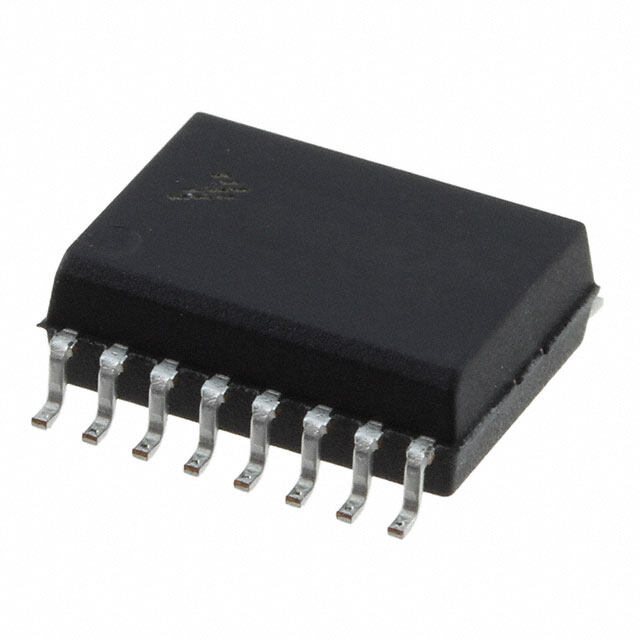


- 商务部:美国ITC正式对集成电路等产品启动337调查
- 曝三星4nm工艺存在良率问题 高通将骁龙8 Gen1或转产台积电
- 太阳诱电将投资9.5亿元在常州建新厂生产MLCC 预计2023年完工
- 英特尔发布欧洲新工厂建设计划 深化IDM 2.0 战略
- 台积电先进制程称霸业界 有大客户加持明年业绩稳了
- 达到5530亿美元!SIA预计今年全球半导体销售额将创下新高
- 英特尔拟将自动驾驶子公司Mobileye上市 估值或超500亿美元
- 三星加码芯片和SET,合并消费电子和移动部门,撤换高东真等 CEO
- 三星电子宣布重大人事变动 还合并消费电子和移动部门
- 海关总署:前11个月进口集成电路产品价值2.52万亿元 增长14.8%
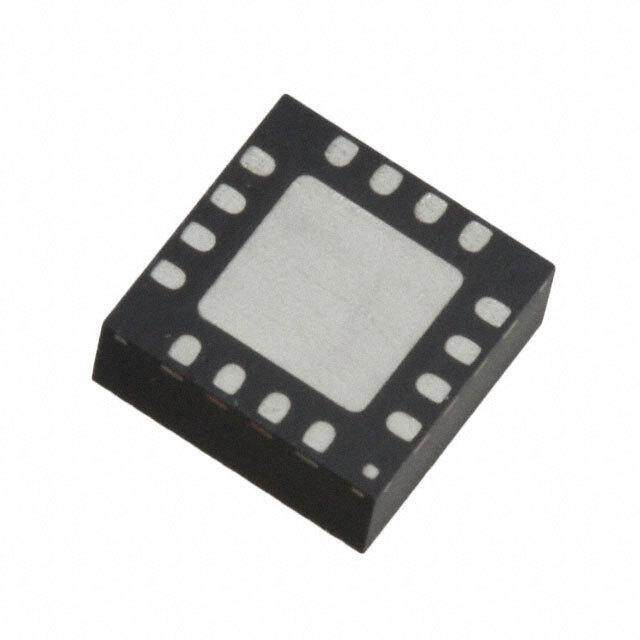
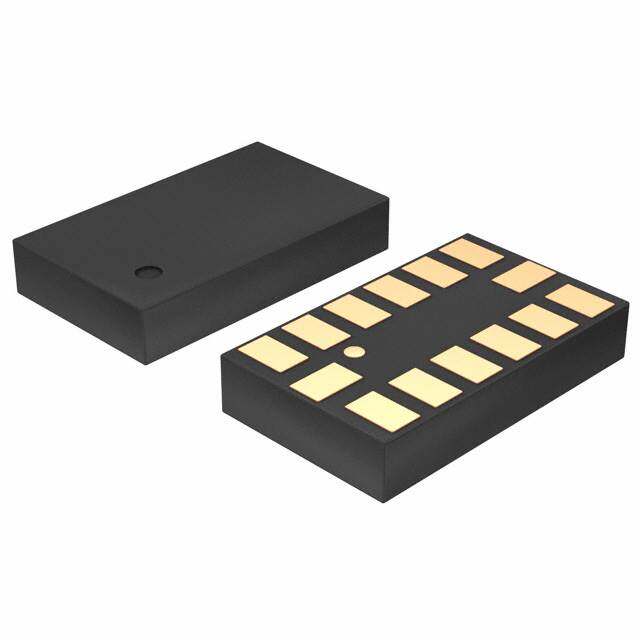
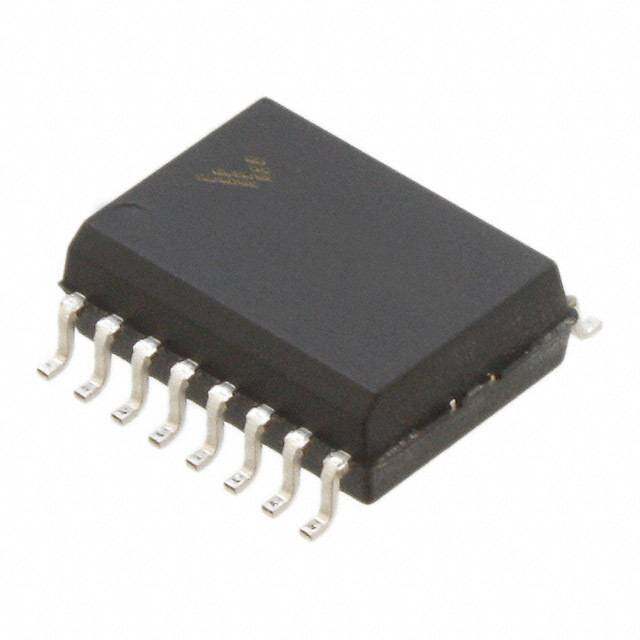

PDF Datasheet 数据手册内容提取
Small, Low Power, 2-Axis ±3 g i MEMS® Accelerometer ADXL323 FEATURES GENERAL DESCRIPTION 2-axis sensing The ADXL323 is a small, thin, low power, complete 2-axis Small, low-profile package accelerometer with signal-conditioned voltage outputs, all 4 mm × 4 mm × 1.45 mm LFCSP_LQ on a single, monolithic IC. The product measures acceleration Low power with a minimum full-scale range of ±3 g. It can measure the 180 μA at V = 1.8 V (typical) S static acceleration of gravity in tilt-sensing applications, as well Single-supply operation as dynamic acceleration resulting from motion, shock, or 1.8 V to 5.25 V vibration. 10,000 g shock survival Excellent temperature stability The user selects the bandwidth of the accelerometer using the BW adjustment with a single capacitor per axis CX and CY capacitors at the XOUT and YOUT pins. Bandwidths RoHS/WEEE lead-free compliant can be selected to suit the application, with a range of 0.5 Hz to 1600 Hz. APPLICATIONS The ADXL323 is available in a small, low profile, 4 mm × Cost-sensitive, low power, motion- and tilt-sensing 4 mm × 1.45 mm, 16-lead, plastic lead frame chip scale package applications (LFCSP_LQ). Mobile devices Gaming systems Disk drive protection Image stabilization Sports and health devices FUNCTIONAL BLOCK DIAGRAM +3V VS ADXL323 RFILT XOUT 2-AXIS OUTPUTAMP SENSOR CX CDC ACAMP DEMOD RFILT YOUT OUTPUTAMP CY COM ST 06237-001 Figure 1. Rev. 0 Information furnished by Analog Devices is believed to be accurate and reliable. However, no responsibility is assumed by Analog Devices for its use, nor for any infringements of patents or other One Technology Way, P.O. Box 9106, Norwood, MA 02062-9106, U.S.A. rights of third parties that may result from its use. Specifications subject to change without notice. No license is granted by implication or otherwise under any patent or patent rights of Analog Devices. Tel: 781.329.4700 www.analog.com Trademarks and registered trademarks are the property of their respective owners. Fax: 781.461.3113 ©2007 Analog Devices, Inc. All rights reserved.
ADXL323 TABLE OF CONTENTS Features..............................................................................................1 Performance................................................................................11 Applications.......................................................................................1 Applications.....................................................................................12 General Description.........................................................................1 Power Supply Decoupling.........................................................12 Functional Block Diagram..............................................................1 Setting the Bandwidth Using C , C , and C ..........................12 X Y Z Revision History...............................................................................2 Self Test........................................................................................12 Specifications.....................................................................................3 Design Trade-Offs for Selecting Filter Characteristics: The Noise/BW Trade-Off..................................................................12 Absolute Maximum Ratings............................................................4 Use with Operating Voltages Other Than 3 V...........................12 ESD Caution..................................................................................4 Axes of Acceleration Sensitivity...............................................13 Pin Configuration and Function Descriptions.............................5 Outline Dimensions.......................................................................14 Typical Performance Characteristics.............................................6 Ordering Guide..........................................................................14 Theory of Operation......................................................................11 Mechanical Sensor......................................................................11 REVISION HISTORY 8/06—Revision 0: Initial Version Rev. 0 | Page 2 of 16
ADXL323 SPECIFICATIONS T = 25°C, V = 3 V, C = C = 0.1 μF, acceleration = 0 g, unless otherwise noted. All minimum and maximum specifications are A S X Y guaranteed. Typical specifications are not guaranteed. Table 1. Parameter Conditions Min Typ Max Unit SENSOR INPUT Each axis Measurement Range ±3 ±3.6 g Nonlinearity % of full scale ±0.3 % Package Alignment Error ±1 Degrees Inter-Axis Alignment Error ±0.1 Degrees Cross Axis Sensitivity1 ±1 % SENSITIVITY (RATIOMETRIC)2 Each axis Sensitivity at X , Y V = 3 V 270 300 330 mV/g OUT OUT S Sensitivity Change Due to Temperature3 V = 3 V ±0.015 %/°C S ZERO g BIAS LEVEL (RATIOMETRIC) Each axis 0 g Voltage at X , Y V = 3 V 1.35 1.5 1.65 V OUT OUT S 0 g Offset vs. Temperature ±0.6 mg/°C NOISE PERFORMANCE Noise Density X , Y 280 μg/√Hz rms OUT OUT FREQUENCY RESPONSE4 Bandwidth X , Y 5 No external filter 1600 Hz OUT OUTT R Tolerance 32 ± 15% kΩ FILT Sensor Resonant Frequency 5.5 kHz SELF TEST6 T Logic Input Low +0.6 V Logic Input High +2.4 V ST Actuation Current +60 μA Output Change at X Self Test 0 to Self Test 1 −150 mV OUT Output Change at Y Self Test 0 to Self Test 1 +150 mV OUT OUTPUT AMPLIFIER Output Swing Low No load 0.1 V Output Swing High No load 2.8 V POWER SUPPLY Operating Voltage Range 1.8 5.25 V Supply Current V = 3 V 320 μA S Turn-On Time7 No external filter 1 ms TEMPERATURE Operating Temperature Range −25 +70 °C 1 Defined as coupling between two axes. 2 Sensitivity is essentially ratiometric to VS. 3 Defined as the output change from ambient-to-maximum temperature or ambient-to-minimum temperature. 4 Actual frequency response controlled by user-supplied external filter capacitors (CX, CY). 5 Bandwidth with external capacitors = 1/(2 × π × 32 kΩ × C). For CX, CY = 0.003 μF, bandwidth = 1.6 kHz. For CX, CY = 10 μF, bandwidth = 0.5 Hz. 6 Self-test response changes cubically with VS. 7 Turn-on time is dependent on CX, CY and is approximately 160 × CX or CY + 1 ms, where CX, CY are in μF. Rev. 0 | Page 3 of 16
ADXL323 ABSOLUTE MAXIMUM RATINGS Table 2. Stresses above those listed under Absolute Maximum Ratings Parameter Rating may cause permanent damage to the device. This is a stress Acceleration (Any Axis, Unpowered) 10,000 g rating only; functional operation of the device at these or any Acceleration (Any Axis, Powered) 10,000 g other conditions above those indicated in the operational V −0.3 V to +7.0 V S section of this specification is not implied. Exposure to absolute All Other Pins (COM − 0.3 V) to (V + 0.3 V) S maximum rating conditions for extended periods may affect Output Short-Circuit Duration Indefinite device reliability. (Any Pin to Common) Temperature Range (Powered) −55°C to +125°C Temperature Range (Storage) −65°C to +150°C CRITICALZONE TP tP TLTOTP RAMP-UP URETL TSMAX tL T A ER TSMIN P M E T t PREHSEAT RAMP-DOWN t25°CTOPEAK TIME 06237-002 Figure 2. Recommended Soldering Profile Table 3. Recommended Soldering Profile Profile Feature Sn63/Pb37 Pb-Free Average Ramp Rate (T to T) 3°C/sec max 3°C/sec max L P Preheat Minimum Temperature (T ) 100°C 150°C SMIN Maximum Temperature (T ) 150°C 200°C SMAX Time (T to T ), t 60 sec to 120 s 60 sec to 180 sec SMIN SMAX S T to T SMAX L Ramp-Up Rate 3°C/sec max 3°C/sec max Time Maintained Above Liquidous (T) L Liquidous Temperature (T) 183°C 217°C L Time (t) 60 sec to 150 sec 60 sec to 150 sec L Peak Temperature (T) 240°C + 0°C/−5°C 260°C + 0°C/−5°C P Time within 5°C of Actual Peak Temperature (t) 10 sec to 30 sec 20 sec to 40 sec P Ramp-Down Rate 6°C/sec max 6°C/sec max Time 25°C to Peak Temperature 6 minutes max 8 minutes max ESD CAUTION ESD (electrostatic discharge) sensitive device. Electrostatic charges as high as 4000 V readily accumulate on the human body and test equipment and can discharge without detection. Although this product features proprietary ESD protection circuitry, permanent damage may occur on devices subjected to high energy electrostatic discharges. Therefore, proper ESD precautions are recommended to avoid performance degradation or loss of functionality. Rev. 0 | Page 4 of 16
ADXL323 PIN CONFIGURATION AND FUNCTION DESCRIPTIONS 0.50 4 MAX 0.65 0.325 0.35 MAX 0.65 NC VS VS NC 16 15 14 13 4 ADXL323 NC 1 12 XOUT 1.95 TOPVIEW ST 2 (NottoScale) 11 NC 0.325 +Y COM 3 10 YOUT CENTERPAD ISNOT INTERNALLYCONNECTED NC 4 +X 9 NC BFOUTRSMHEOCUHLADNIBCEALS OINLTDEEGRREIDTY 5 6 7 8 M M M C 1.95 NCOC=NCOOCOCONNENCT 06237-003 DIMENSIONSSHOWN INMILLIMETERS 06237-004 Figure 3. Pin Configuration Figure 4. Recommended PCB Layout Table 4. Pin Function Descriptions Pin No. Mnemonic Description 1 NC No Connect 2 ST Self Test 3 COM Common 4 NC No Connect 5 COM Common 6 COM Common 7 COM Common 8 NC No Connect 9 NC No Connect 10 Y Y Channel Output OUT 11 NC No Connect 12 X X Channel Output OUT 13 NC No Connect 14 V Supply Voltage (1.8 V to 5.25 V) S 15 V Supply Voltage (1.8 V to 5.25 V) S 16 NC No Connect Rev. 0 | Page 5 of 16
ADXL323 TYPICAL PERFORMANCE CHARACTERISTICS N > 1000 for all typical performance plots, unless otherwise noted. 16 16 14 14 12 12 N N TIO 10 TIO 10 A A L L PU 8 PU 8 O O P P OF 6 OF 6 % % 4 4 02 06237-005 02 06237-008 0.950.960.970.980.991.001.011.021.031.041.051.061.071.081.09 0.950.960.970.980.991.001.011.021.031.041.051.061.071.081.09 OUTPUT(V) OUTPUT(V) Figure 5. X-Axis Zero g Bias at 25°C, VS = 2 V Figure 8. Y-Axis Zero g Bias at 25°C, VS = 2 V 40 35 35 30 30 25 N N TIO 25 TIO A A 20 L L PU 20 PU O O P P 15 OF 15 OF % % 10 10 05 06237-006 05 06237-009 1.42 1.44 1.46 1.48 1.50 1.52 1.54 1.56 1.58 1.42 1.44 1.46 1.48 1.50 1.52 1.54 1.56 1.58 OUTPUT(V) OUTPUT(V) Figure 6. X-Axis Zero g Bias at 25°C, VS = 3 V Figure 9. Y-Axis Zero g Bias at 25°C, VS = 3 V 30 30 25 25 ON 20 ON 20 TI TI A A L L U U P 15 P 15 O O P P F F O O % 10 % 10 5 5 0 06237-007 0 06237-010 2.30 2.34 2.38 2.42 2.46 2.50 2.54 2.58 2.62 2.66 2.70 2.30 2.34 2.38 2.42 2.46 2.50 2.54 2.58 2.62 2.66 2.70 OUTPUT(V) OUTPUT(V) Figure 7. X-Axis Zero g Bias at 25°C, VS = 5 V Figure 10. Y-Axis Zero g Bias at 25°C, VS = 5 V Rev. 0 | Page 6 of 16
ADXL323 35 40 30 35 30 25 N N TIO TIO 25 A 20 A L L PU PU 20 O O P 15 P OF OF 15 % % 10 10 05 06237-011 05 06237-014 –2.5 –2.0 –1.5 –1.0 –0.5 0 0.5 1.0 1.5 2.0 2.5 –2.5 –2.0 –1.5 –1.0 –0.5 0 0.5 1.0 1.5 2.0 2.5 TEMPERATURECOEFFICIENT(mg/°C) TEMPERATURECOEFFICIENT(mg/°C) Figure 11. X-Axis Zero g Bias Temperature Coefficient, VS = 3 V Figure 14. Y-Axis Zero g Bias Temperature Coefficient, VS = 3 V 35 40 30 35 30 25 N N O O TI TI 25 A 20 A L L U U P P 20 O O P 15 P OF OF 15 % % 10 10 05 06237-012 05 06237-015 –2.5 –2.0 –1.5 –1.0 –0.5 0 0.5 1.0 1.5 2.0 2.5 –2.5 –2.0 –1.5 –1.0 –0.5 0 0.5 1.0 1.5 2.0 2.5 TEMPERATURECOEFFICIENT(mg/°C) TEMPERATURECOEFFICIENT(mg/°C) Figure 12. X-Axis Zero g Bias Temperature Coefficient, VS = 5 V Figure 15. Y-Axis Zero g Bias Temperature Coefficient, VS = 5 V 1.55 1.55 N=8 N=8 1.54 1.54 1.53 1.53 1.52 1.52 1.51 1.51 S S LT 1.50 LT 1.50 O O V V 1.49 1.49 1.48 1.48 1.47 1.47 11..4465 06237-013 11..4465 06237-016 –30 –20 –10 0 10 20 30 40 50 60 70 80 –30 –20 –10 0 10 20 30 40 50 60 70 80 TEMPERATURE(°C) TEMPERATURE(°C) Figure 13. X-Axis Zero g Bias vs. Temperature; Figure 16. Y-Axis Zero g Bias vs. Temperature; Eight Parts Soldered to PCB, VS = 3 V Eight Parts Soldered to PCB, VS = 3 V Rev. 0 | Page 7 of 16
ADXL323 35 40 30 35 30 25 N N TIO TIO 25 A 20 A L L PU PU 20 O O P 15 P OF OF 15 % % 10 10 05 06237-017 05 06237-020 0.1700.1740.1780.1820.1860.1900.1940.1980.2020.2060.210 0.1700.1740.1780.1820.1860.1900.1940.1980.2020.2060.210 SENSITIVITY(V/g) SENSITIVITY(V/g) Figure 17. X-Axis Sensitivity at 25°C, VS = 2 V Figure 20. Y-Axis Sensitivity at 25°C, VS = 2 V 60 70 60 50 50 N 40 N O O TI TI A A 40 L L PU 30 PU O O P P 30 F F O O % 20 % 20 10 10 0 06237-018 0 06237-021 0.26 0.27 0.28 0.29 0.30 0.31 0.32 0.33 0.34 0.26 0.27 0.28 0.29 0.30 0.31 0.32 0.33 0.34 SENSITIVITY(V/g) SENSITIVITY(V/g) Figure 18. X-Axis Sensitivity at 25°C, VS = 3 V Figure 21. Y-Axis Sensitivity at 25°C, VS = 3 V 25 40 35 20 30 N N O O TI 15 TI 25 A A L L U U P P 20 O O P P OF 10 OF 15 % % 10 5 0 06237-019 05 06237-022 0.50 0.51 0.52 0.53 0.54 0.55 0.56 0.57 0.58 0.59 0.60 0.50 0.51 0.52 0.53 0.54 0.55 0.56 0.57 0.58 0.59 0.60 SENSITIVITY(V/g) SENSITIVITY(V/g) Figure 19. X-Axis Sensitivity at 25°C, VS = 5 V Figure 22. Y-Axis Sensitivity at 25°C, VS = 5 V Rev. 0 | Page 8 of 16
ADXL323 90 70 80 60 70 50 N 60 N O O TI TI LA 50 LA 40 U U P P PO 40 PO 30 F F O O % 30 % 20 20 10 100 06237-023 0 06237-026 –2.0 –1.6 –1.2 –0.8 –0.4 0 0.4 0.8 1.2 1.6 2.0 –2.0 –1.6 –1.2 –0.8 –0.4 0 0.4 0.8 1.2 1.6 2.0 DRIFT(%) DRIFT(%) Figure 23. X-Axis Sensitivity Drift Over Temperature, VS = 3 V Figure 26. Y-Axis Sensitivity Drift Over Temperature, VS = 3 V 100 80 90 70 80 60 70 N N O O TI 60 TI 50 A A L L U U P 50 P 40 O O P P OF 40 OF 30 % 30 % 20 20 100 06237-024 100 06237-027 –2.0 –1.6 –1.2 –0.8 –0.4 0 0.4 0.8 1.2 1.6 2.0 –2.0 –1.6 –1.2 –0.8 –0.4 0 0.4 0.8 1.2 1.6 2.0 DRIFT(%) DRIFT(%) Figure 24. X-Axis Sensitivity Drift Over Temperature, VS = 5 V Figure 27. Y-Axis Sensitivity Drift Over Temperature, VS = 5 V 0.33 0.33 N=8 N=8 0.32 0.32 g) 0.31 g) 0.31 V/ V/ Y ( Y ( T T VI 0.30 VI 0.30 TI TI SI SI N N SE 0.29 SE 0.29 0.28 0.28 0.27 06237-025 0.27 06237-028 –30 –20 –10 0 10 20 30 40 50 60 70 80 –30 –20 –10 0 10 20 30 40 50 60 70 80 TEMPERATURE(°C) TEMPERATURE(°C) Figure 25. X-Axis Sensitivity vs. Temperature Figure 28. Y-Axis Sensitivity vs. Temperature Eight Parts Soldered to PCB, VS = 3 V Eight Parts Soldered to PCB, VS = 3 V Rev. 0 | Page 9 of 16
ADXL323 600 T 500 400 A) 4 µ T ( EN 300 3 R R U C 200 2 1 100 0 06237-029 06237-030 0 1 2 3 4 5 6 CH1 1.00V BWCH2 500mV BW M1.00ms A CH1 300mV SUPPLY(V) CH3 500mV CH4 500mV T 9.400% Figure 29. Typical Current Consumption vs. Supply Voltage Figure 30. Typical Turn-On Time; CX, CY = 0.0047 μF, VS = 3 V Rev. 0 | Page 10 of 16
ADXL323 THEORY OF OPERATION The ADXL323 is a complete 2-axis acceleration measurement MECHANICAL SENSOR system on a single, monolithic IC. The ADXL323 has a measure- The ADXL323 uses a single structure for sensing the X-axis and ment range of ±3 g minimum. It contains a polysilicon surface Y-axis. As a result, the sense directions of the two axes are micromachined sensor and signal conditioning circuitry to highly orthogonal with little cross axis sensitivity. Mechanical implement an open-loop acceleration measurement architecture. misalignment of the sensor die to the package is the chief The output signals are analog voltages that are proportional to source of cross axis sensitivity. Mechanical misalignment can, of acceleration. The accelerometer can measure the static accelera- course, be calibrated out at the system level. tion of gravity in tilt sensing applications, as well as dynamic acceleration resulting from motion, shock, or vibration. PERFORMANCE Rather than using additional temperature compensation The sensor is a polysilicon surface micromachined structure circuitry, innovative design techniques ensure that high built on top of a silicon wafer. Polysilicon springs suspend the performance is built in to the ADXL323. As a result, there is structure over the surface of the wafer and provide a resistance neither quantization error nor nonmonotonic behavior, and against acceleration forces. Deflection of the structure is meas- temperature hysteresis is very low (typically less than 3 mg over ured using a differential capacitor that consists of independent the −25°C to +70°C temperature range). fixed plates and plates attached to the moving mass. The fixed plates are driven by 180° out-of-phase square waves. Acceleration Figure 13 and Figure 16 show the zero g output performance of deflects the moving mass and unbalances the differential eight parts (X-axis and Y-axis) soldered to a PCB over a −25°C capacitor resulting in a sensor output whose amplitude is to +70°C temperature range. proportional to acceleration. Phase-sensitive demodulation techniques are then used to determine the magnitude and Figure 25 and Figure 28 demonstrate the typical sensitivity shift direction of the acceleration. over temperature for supply voltages of 3 V. This is typically better than ±1% over the −25°C to +70°C temperature range. The demodulator output is amplified and brought off-chip through a 32 kΩ resistor. The user then sets the signal band- width of the device by adding a capacitor. This filtering improves measurement resolution and helps prevent aliasing. Rev. 0 | Page 11 of 16
ADXL323 APPLICATIONS POWER SUPPLY DECOUPLING Never expose the ST pin to voltages greater than V + 0.3 V. S If this cannot be guaranteed due to the system design (for For most applications, a single 0.1 μF capacitor, C , placed DC example, if there are multiple supply voltages), a low V close to the ADXL323 supply pins adequately decouples the F clamping diode between ST and V is recommended. accelerometer from noise on the power supply. However, in S applications where noise is present at the 50 kHz internal clock DESIGN TRADE-OFFS FOR SELECTING FILTER frequency (or any harmonic thereof), additional care in power CHARACTERISTICS: THE NOISE/BW TRADE-OFF supply bypassing is required because this noise can cause errors The selected accelerometer bandwidth ultimately determines in acceleration measurement. If additional decoupling is needed, the measurement resolution (smallest detectable acceleration). a 100 Ω (or smaller) resistor or ferrite bead can be inserted in Filtering can be used to lower the noise floor to improve the the supply line. Additionally, a larger bulk bypass capacitor resolution of the accelerometer. Resolution is dependent on the (1 μF or greater) can be added in parallel to C . Ensure that the DC analog filter bandwidth at X and Y . connection from the ADXL323 ground to the power supply OUT OUT ground is low impedance because noise transmitted through The output of the ADXL323 has a typical bandwidth of greater ground has an effect similar to that of noise transmitted than 1600 Hz. The user must filter the signal at this point to through V. S limit aliasing errors. The analog bandwidth must be no more SETTING THE BANDWIDTH USING C , C , AND C than half the analog-to-digital sampling frequency to minimize X Y Z aliasing. The analog bandwidth can be further decreased to The ADXL323 has provisions for band limiting the X pin OUT reduce noise and improve resolution. and the Y pin. Capacitors must be added at these pins to OUT implement low-pass filtering for antialiasing and noise The ADXL323 noise has the characteristics of white Gaussian reduction. The equation for the 3 dB bandwidth is noise, which contributes equally at all frequencies and is described in terms of μg/√Hz (the noise is proportional to the F = 1/(2π(32 kΩ) × C ) −3 dB (X, Y, Z) square root of the accelerometer bandwidth). The user should or more simply limit bandwidth to the lowest frequency needed by the applica- tion to maximize the resolution and dynamic range of the F–3 dB = 5 μF/C(X, Y, Z) accelerometer. The tolerance of the internal resistor (RFILT) typically varies as With the single-pole, roll-off characteristic, the typical noise of much as ±15% of its nominal value (32 kΩ), and the bandwidth the ADXL323 is determined by varies accordingly. A minimum capacitance of 0.0047 μF for C , X C , and C is recommended in all cases. rmsNoise=NoiseDensity×( BW×1.6) Y Z Table 5. Filter Capacitor Selection, C , C , and C X Y Z Often, the peak value of the noise is desired. Peak-to-peak noise Bandwidth (Hz) Capacitor (μF) can only be estimated by statistical methods. Table 6 is useful 1 4.7 for estimating the probabilities of exceeding various peak 10 0.47 values, given the rms value. 50 0.10 Table 6. Estimation of Peak-to-Peak Noise 100 0.05 % of Time that Noise Exceeds 200 0.027 Peak-to-Peak Value Nominal Peak-to-Peak Value 500 0.01 2 × rms 32 4 × rms 4.6 SELF TEST 6 × rms 0.27 The ST pin controls the self-test feature. When this pin is set to 8 × rms 0.006 V, an electrostatic force is exerted on the accelerometer beam. S The resulting movement of the beam allows the user to test if USE WITH OPERATING VOLTAGES OTHER THAN 3 V the accelerometer is functional. The typical change in output is The ADXL323 is tested and specified at V = 3 V; however, it −500 mg (corresponding to −150 mV) in the X-axis, and 500 mg S can be powered with V as low as 1.8 V or as high as 5.25 V. (or 150 mV) on the Y-axis. This ST pin can be left open circuit S Note that some performance parameters change as the supply or connected to common (COM) in normal use. voltage is varied. Rev. 0 | Page 12 of 16
ADXL323 At V = 1.8 V, the self-test response is approximately −40 mV The ADXL323 output is ratiometric; therefore, the output S for the X-axis and +40 mV for the Y-axis. sensitivity (or scale factor) varies proportionally to the supply voltage. At V = 5 V, the output sensitivity is typically 550 mV/g. S The supply current decreases as the supply voltage decreases. At V = 2 V, the output sensitivity is typically 190 mV/g. S Typical current consumption at V = 5 V is 500 μA, and typical S current consumption at V = 1.8 V is 180 μA. The zero g bias output is also ratiometric, so the zero g output is S nominally equal to VS/2 at all supply voltages. AXES OF ACCELERATION SENSITIVITY The output noise is not ratiometric but is absolute in volts; AY therefore, the noise density decreases as the supply voltage increases. This is because the scale factor (mV/g) increases, while the noise voltage remains constant. At V = 5 V, the noise S density is typically 180 μg/√Hz, while at V = 1.8 V, the noise S TOP density is typically 360 μg/√Hz. Stheelf -stuepspt lrye svpooltnasgee .i nH go wis ervoeurg, hwlhye pnr oraptoiortmioentrailc tioty t hofe sseqnusaitriev oitfy AX 06237-031 is factored in with supply voltage, the self-test response in volts Figure 31. Axes of Acceleration Sensitivity, Corresponding Output Voltage Increases When Accelerated Along the Sensitive Axis is roughly proportional to the cube of the supply voltage. For example, at V = 5 V, the self-test response for the ADXL323 is S approximately −700 mV for the X-axis and +700 mV for the Y-axis. XOUT=–1g YOUT=0g TOP GRAVITY XYOOUUTT==01gg TOP TOP YXOOUUTT==0–g1g TOP XOUT=1g YOUT=0g TOP XYOOUUTT==00gg YXOOUUTT==00gg 06237-032 Figure 32. Output Response vs. Orientation to Gravity Rev. 0 | Page 13 of 16
ADXL323 OUTLINE DIMENSIONS 0.20 MIN PIN 1 0.20 MIN INDICATOR 13 16 INDICAPTINO R1 VTIOEPW 44..1050 SQ 12 BOVTIETWOM 1 21..4735 SQ 3.85 0.65 BSC 1.08 9 4 8 5 0.55 0.50 0.45 1.95BSC 0.05 MAX 1.50 0.02 NOM 11..4450 SEATING 00..3350 COPL0A.0N5ARITY PLANE 0.25 *STACKED DIE WITH GLASS SEAL. 072606-A Figure 33. 16-Lead Lead Frame Chip Scale Package [LFCSP_LQ] 4 mm × 4 mm Body, Thick Quad (CP-16-5a*) Dimensions shown in millimeters ORDERING GUIDE Model Measurement Range Specified Voltage Temperature Range Package Description Package Option ADXL323KCPZ1 ±3 g 3 V −25°C to +70°C 16-Lead LFCSP_LQ CP-16-5a ADXL323KCPZ–RL1 ±3 g 3 V −25°C to +70°C 16-Lead LFCSP_LQ CP-16-5a EVAL-ADXL323Z1 Evaluation Board 1 Z = Pb-free part. Rev. 0 | Page 14 of 16
ADXL323 NOTES Rev. 0 | Page 15 of 16
ADXL323 NOTES ©2007 Analog Devices, Inc. All rights reserved. Trademarks and registered trademarks are the property of their respective owners. D06237-0-6/07(0) Rev. 0 | Page 16 of 16
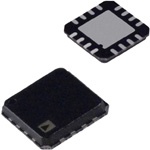
 Datasheet下载
Datasheet下载
